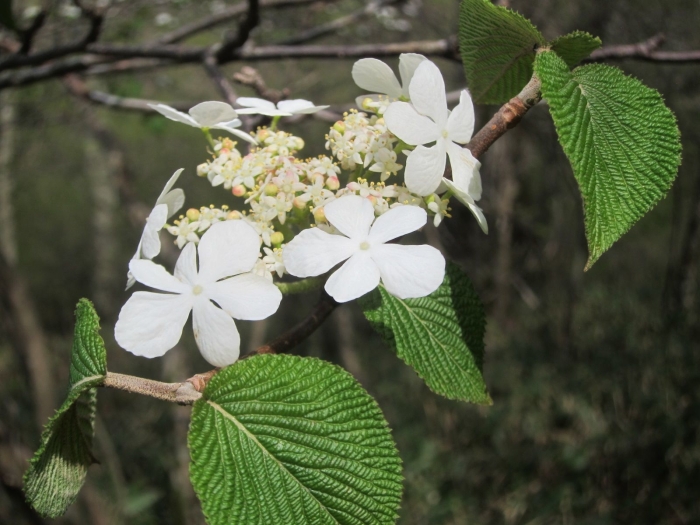Forked Viburnum
(Viburnum furcatum)
Forked Viburnum (Viburnum furcatum)
/
/

belvedere04
CC BY 4.0
Image By:
belvedere04
Recorded By:
Copyright:
CC BY 4.0
Copyright Notice:
Photo by: belvedere04 | License Type: CC BY 4.0 | License URL: http://creativecommons.org/licenses/by/4.0/ | Rights Holder: belvedere04 | Publisher: iNaturalist | Date Created: 2017-05-11T12:07:04-07:00 |

























Estimated Native Range
Summary
Viburnum furcatum, commonly known as forked viburnum or scarlet-leaved viburnum, is a deciduous shrub native to the cool temperate forests of Japan, Taiwan, and Korea. It can grow up to 13 feet in both height and width, with a rounded, bushy habit. The leaves are broadly ovate, serrated, and have a distinctive three-lobed shape, which is where the common name ’forked’ derives from. In autumn, the foliage turns a vibrant scarlet color, providing a striking display. The shrub produces fragrant white flowers in late spring to early summer, which are arranged in flat-topped clusters resembling lacecap hydrangeas. These are followed by spherical black fruits that can attract birds and wildlife.
Viburnum furcatum is valued for its ornamental features, including its autumn foliage and fragrant flowers. It has received the Royal Horticultural Society’s Award of Garden Merit. This shrub is suitable for a variety of garden settings, including mixed borders and woodland gardens. It thrives in moist, well-drained soil and prefers partial shade but can tolerate full sun if the soil remains consistently moist. While generally easy to maintain, it can be susceptible to viburnum beetle and fungal diseases such as leaf spot. To promote healthy growth and prevent potential problems, regular monitoring and good cultural practices are recommended.CC BY-SA 4.0
Viburnum furcatum is valued for its ornamental features, including its autumn foliage and fragrant flowers. It has received the Royal Horticultural Society’s Award of Garden Merit. This shrub is suitable for a variety of garden settings, including mixed borders and woodland gardens. It thrives in moist, well-drained soil and prefers partial shade but can tolerate full sun if the soil remains consistently moist. While generally easy to maintain, it can be susceptible to viburnum beetle and fungal diseases such as leaf spot. To promote healthy growth and prevent potential problems, regular monitoring and good cultural practices are recommended.CC BY-SA 4.0
Plant Description
- Plant Type: Shrub
- Height: 6-10 feet
- Width: 6-10 feet
- Growth Rate: Moderate
- Flower Color: White
- Flowering Season: Spring
- Leaf Retention: Deciduous
Growth Requirements
- Sun: Full Sun, Part Shade
- Water: Medium
- Drainage: Medium
Common Uses
Bird Garden, Border Plant, Low Maintenance, Showy Flowers
Natural Habitat
native to the cool temperate forests of Japan, Taiwan, and Korea
Other Names
Common Names: Japanese Viburnum
Scientific Names: , Viburnum furcatum, Viburnum furcatum, Viburnum lantanoides,
GBIF Accepted Name: